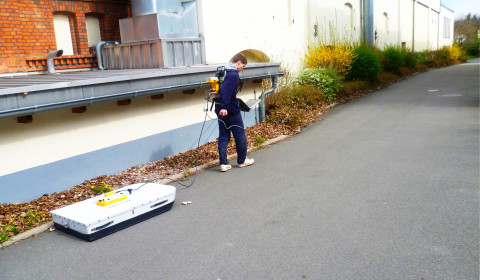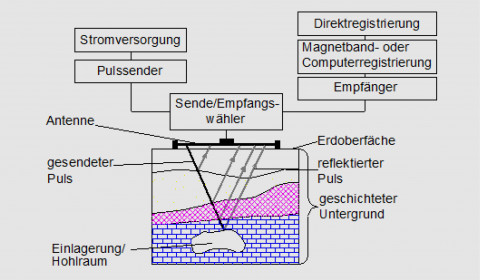Ground Penetrating Radar
Ground penetrating radar (GPR) is an impulse reflection method. A transmitting antenna on the surface emits short electromagnetic pulses (mainly) into one direction like the ground. These radio waves propagate thorugh the rock/sediment and are partly reflected on layer boundaries or local inhomogeneities of different dielectric properties. The reflected signals will be recorded by a receiving antenna and the reflector‘s locations relative to the surface can be determined from the travel times. This method facilitates the detection of layer boundaries, cavities, karstic structures, weathered zones or anthropogenic structures.
GPR offers a quasi-continuous and very fast measurement and can thus cover large areas in a short time.
Thanks to this nondestructive, time and cost efficient method you can gain structural and spatial information about the geology and tectonics of the investigation area as well as about anthropogenic bodies below the surface.
-

GPR measurements for the detection of anthropogenic cavities -

Calibration measurements for the detection of utilities -

Principle of a ground penetrating radar measurement
